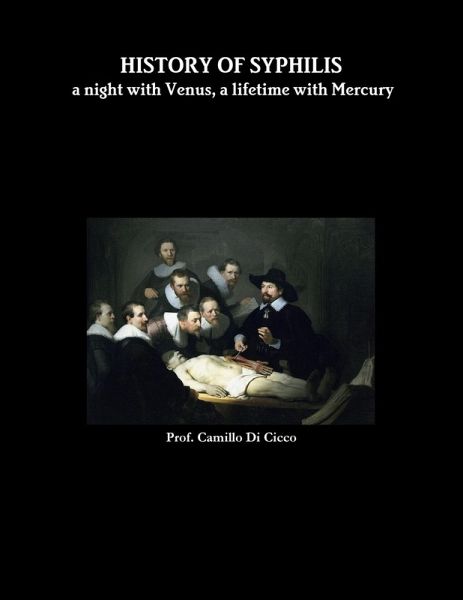
HISTORY OF SYPHILIS a night with Venus, a lifetime with Mercury
Versandkostenfrei!
Versandfertig in 1-2 Wochen
30,99 €
inkl. MwSt.

PAYBACK Punkte
15 °P sammeln!
In 1025 the Persian physician Abu Ali al- Hussein, known as Avicenna (980-1037), in his book "Qanun fit-Tibb at", translated into Latin by Gerardo da Cremona as "Liber canonis medicinae ", suggests the use of mercury in syphilis. Successively this therapy came in Europe and, beyond for use in the form of an ointment / poultice, the mercury was widely used in fumigation. Therefore, appealed the sentence at this time "A night with Venus, a lifetime with Mercury". In Rome, towards the end of the '400, clandestines excluding, were available approximately 6800 prostitutes. In Venice the prostitutes...
In 1025 the Persian physician Abu Ali al- Hussein, known as Avicenna (980-1037), in his book "Qanun fit-Tibb at", translated into Latin by Gerardo da Cremona as "Liber canonis medicinae ", suggests the use of mercury in syphilis. Successively this therapy came in Europe and, beyond for use in the form of an ointment / poultice, the mercury was widely used in fumigation. Therefore, appealed the sentence at this time "A night with Venus, a lifetime with Mercury". In Rome, towards the end of the '400, clandestines excluding, were available approximately 6800 prostitutes. In Venice the prostitutes were forced to walk with a yellow handkerchief around the neck like sign of acknowledgment. It was the sexual abstinence that the Church adopted as a remedy in order to avoid such disease and Pope Paul IV, around to the half of the '500, decreed with an edict an evicting from Rome and all the Papal State of the prostitutes.














